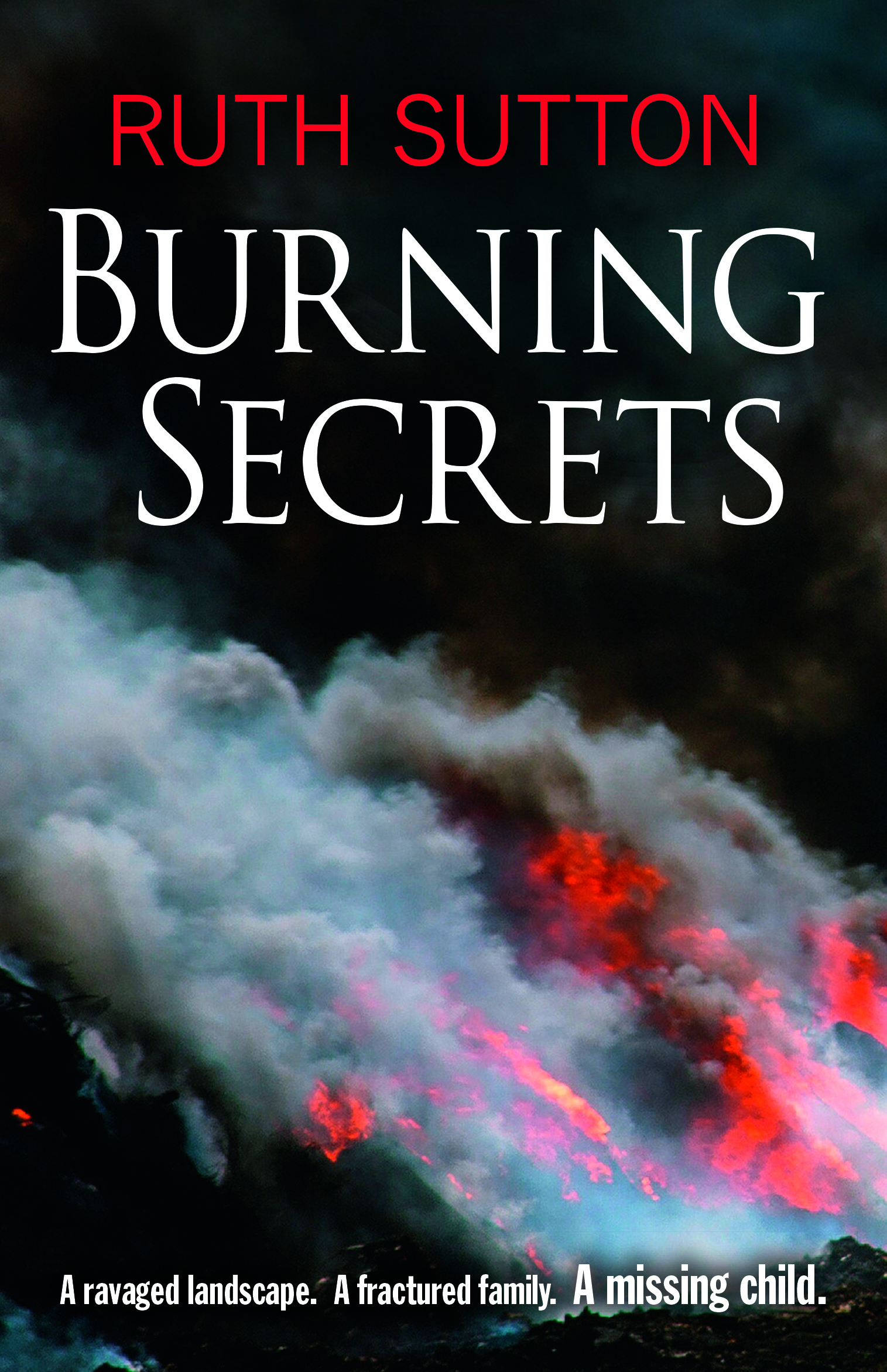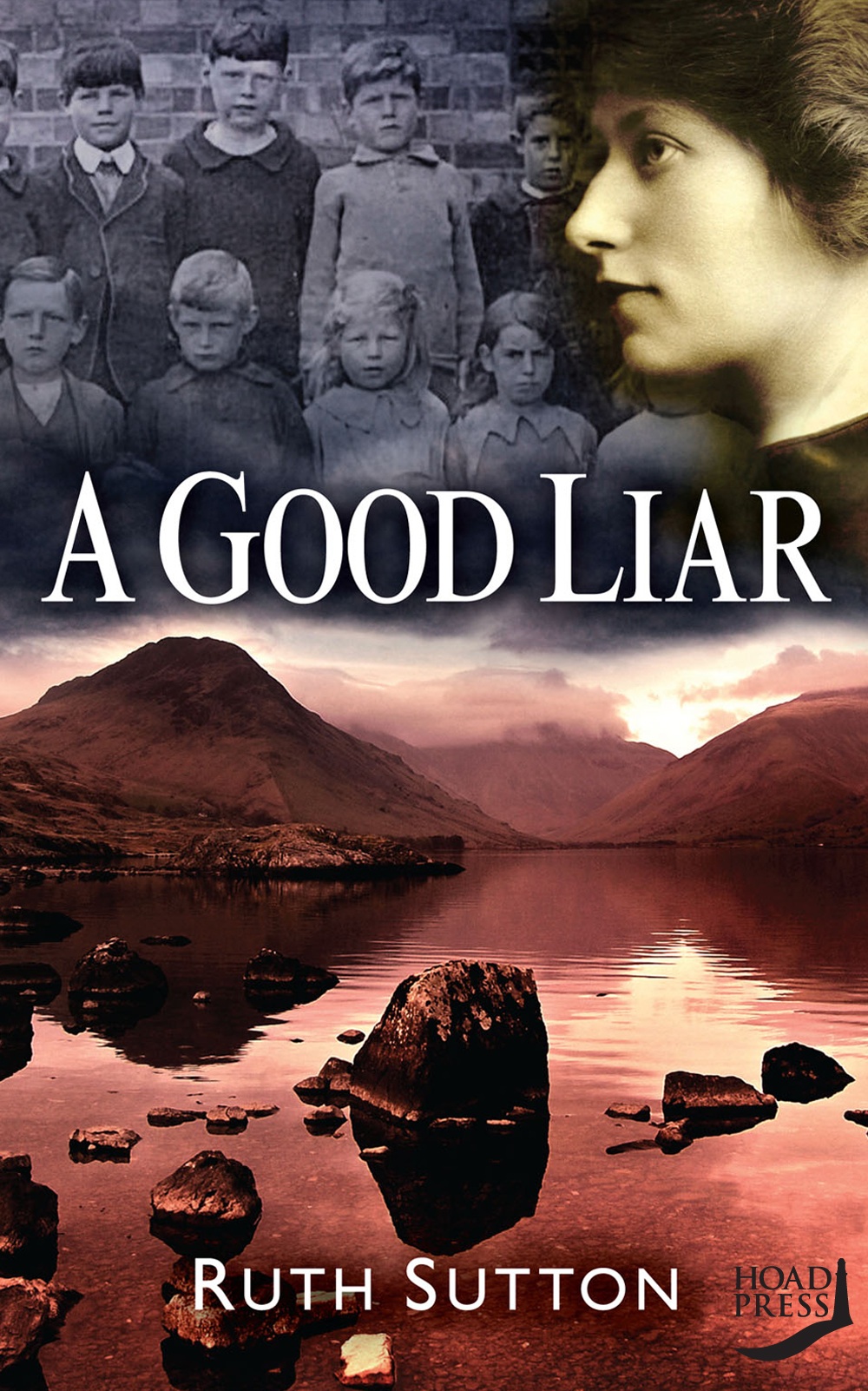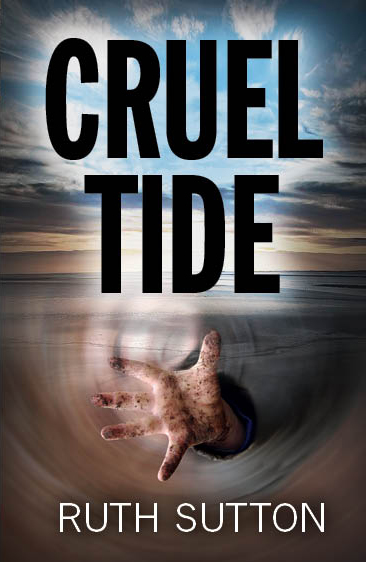by admin | Jun 10, 2018 | Burning Secrets, crime fiction, Cumbria, historical fiction, Lake District, landscape, plotting, self-publishing, Uncategorized, West Cumbria
 I’m ruthless with my Twitter feed, regularly and systematically blocking anything I don’t want and refusing to ‘follow back’ until I’ve checked the person out. Too many ‘followers’ are just fishing for reciprocation, and I’m not interested. As a consequence, my Twitter line includes almost exclusively people involved either in books and publishing, or Cumbria and the Lake District, or any combination of those.
I’m ruthless with my Twitter feed, regularly and systematically blocking anything I don’t want and refusing to ‘follow back’ until I’ve checked the person out. Too many ‘followers’ are just fishing for reciprocation, and I’m not interested. As a consequence, my Twitter line includes almost exclusively people involved either in books and publishing, or Cumbria and the Lake District, or any combination of those.
In a sense those two threads dominate my thinking about my books and writing. I’m passionately interested in West Cumbria, an area I have loved all my life and where I’ve lived for the past decade and more. Part of my determination to begin writing fiction at a relatively advanced age stemmed from the need to write about this place and its history and people.
That’s the upside: the downside is that I’ve never been sure about the ‘genre’ of my writing. Which comes first for me – setting, characters, or plot? In the Jessie Whelan trilogy ‘Between the Mountains and the Sea’ the priority was clearly setting and characters. The main external dramas were provided by real events, and the internal dramas arose from the interaction among fictional characters, and between them and their surroundings, both place and time. When I decided to have a go at crime fiction, I realised that balance of those aspects would have to change, and that plot would have to be more important, but I don’t believe I’ve truly made that shift. Setting and characters still dominate, and details of the plot are much harder for me.
Maybe it’s that ambivalence about what my writing is really about that has made me less enthusiastic about the new novel than I should be. All my writerly Twitter acquaintances speak of the arrival of a new book from the printers with such excitement, much like the arrival of a new baby – unalloyed positive feeling. Or at least that’s how it appears. There are photos of piles of books waiting to be signed, glamorous launch events and brimming champagne flutes.
For me, the new book’s arrival last week was just another stage in the long tedious process of self-publishing which has felt endless and stressful, even though the whole schedule has worked without a hitch. I suspect that part of my anxiety about it is a hangover from the anxiety about the serious accident I suffered almost a year ago when the new book was in its very early stages, too late to be abandoned but too early to see the light at the end of the tunnel. For a while I couldn’t walk, or drive, or even type without pain. It would have been good to just relax into recovery but the unfinished book haunted and taunted me, and kept me awake. I resented it, and maybe I still do.
The arrival of a new book could feel like a milestone, and a relief, but it doesn’t, because now the real work starts of trying to sell the damn thing. Promotion requires unceasing optimism and enthusiasm and for me those are both in short supply at present. Should I be honest and admit that the book felt rushed? The background details of the Foot and Mouth outbreak in Cumbria in 2001 are rich, authentic and moving, but one of the characters is unconvincing and the plot allows authenticity to triumph over a more eventful – and satisfying? – ending. I’m always my own harshest critic, which is unhelpful at this stage.
So, for various reasons, when the books arrived I wasn’t overwhelmed with love for a much-loved child after a difficult pregnancy. It was more like ‘Here we go again. And they’re not going to like the ending. And do I really want to do this all over again in another year or so? And I’m supposed to be retired.’ Not very positive is it? Maybe I just need to pull myself together and stop whingeing.
by admin | Apr 4, 2018 | crime fiction, feedback, Publishing, self-publishing, Uncategorized, writing
Of course, the question is facile: it’s not as black and white as that. So let’s pick apart the proof-reading stage of the publishing process, just to see what it contributes and where problems can arise.
First off, doing without proof-reading is a mistake. Nothing irritates a reader and or embarrasses a writer more than published text containing missing words, incorrect or unclosed speech marks, upper case/lower case mistakes, or whatever the obvious transgression might be.  Having said that, something seems to depend on the reader. While some readers spot everything, and usually tell you so, others seem not to notice at all.
Having said that, something seems to depend on the reader. While some readers spot everything, and usually tell you so, others seem not to notice at all.
As an ex-educator with a very picky grammar school education, I’m unbearably fussy about punctuation, or I least I thought I was until a recent experience with a professional proof-reader. My ‘rules’ seem to be based on what I’d learned at school and not updated since, and I was unprepared for the technical approach to writing that my proof-reader friend was keen on. And from what I read about current approaches to ‘grammar’ in English primary schools, it looks like today’s children are getting a bellyful of these ‘rules’ which are then tested: enough to put them off writing confidently for a long time.
I have had a very unfortunate experience with proof-reading, which I’m keen not to repeat. My first three books fared well, or relatively well, with very few errors being spotted during that first nervous check when they came back from the printers. Maybe we got complacent, even sloppy. When the fourth book arrived, something had gone badly wrong. I spotted one or two mistakes in a casual flick through, but then the careful readers’ feedback started. At first it was a general complaint about the number of errors, and then after a routine library talk a woman handed me a list of the errors she had spotted and kindly written out for me. My stomach turned when I glanced at the list of shame. For days I could hardly bear to look at it. Then one morning after a miserable night worrying about it, I sat in bed with the list, a copy of the book and a highlighter pen and marked up every single one. It took a while. In my distress I managed to get highlighter on my duvet covet and it has proved impossible to get rid of, reminding me of the miserable business every time the duvet cover appears on my bed.
It took a while. In my distress I managed to get highlighter on my duvet covet and it has proved impossible to get rid of, reminding me of the miserable business every time the duvet cover appears on my bed.
The colleagues who had helped me with the errant book’s publication were duly informed and were as puzzled as me. How had this happened? We still can’t explain: it was as if the penultimate uncorrected proofs had been sent for printing by mistake. The ebook version of the book was corrected immediately, which was a relief, but I couldn’t afford to scrap the printed paperbacks and redo them. Mercifully, two years on, the stocks of the first edition are almost exhausted now and we can correct the mistakes before the reprint.
No need to convince me of the essential need for proof-reading. The conventions of the written form need to be visible in the text, to make the reader’s life bearable. But…are all these conventions set in stone? Some renowned authors have chosen to ignore them completely, but we can’t all be James Joyce.
Here’s my question: does the style and intensity of proof-reading vary according to genre? What’s acceptable – and required – in an academic paper maybe just too much for a work of fiction. And what’s appropriate to ‘literary fiction’, where writing style is the first concern, may feel wrong in a plot-driven crime story. Even within a story, the level of technical accuracy in a descriptive paragraph will and should be quite different than in dialogue, where people simply don’t speak in full balanced sentences with semi-colons and sub-clauses and all the rest.
Here’s my advice: when you’re working with a new proof-reader, ask for a few sample pages before he/she starts work in earnest. Be prepared for a discussion about the level of correction that could be deemed essential and what is a matter of choice and style. It’s your book, and you call the shots, but obviously you’ll listen to advice from a professionally trained person, even if sometimes you choose to ignore it. I’m sure that some proof-readers yearn to be editors even after the editing stage is officially over, but that could lead to all sorts of confusion and frustration. You – the author – may have to arbitrate and mediate. It’s your name on the cover, and you carry the can.
Back to the original question: can proof-reading flatten language? Yes, potentially it can, by applying ‘rules’ too heavily and inappropriately. If that’s not what you want, make sure you discuss the process with your proof-reader and find an acceptable compromise. “She who pays the piper calls the tune.”
by admin | Feb 26, 2018 | A Good Liar, agents, book covers, cover, crime fiction, Cruel Tide, promotion, Publishing, Uncategorized
With the ms of the new book with the copy editor, I’m thinking ahead to the upcoming stages of the book’s production. I’ll be using the same cover designer as on the previous five novels, and have a brilliant photo image already bought and paid for: now I’m wondering about the ‘back cover blurb’ so that the designer can get started.
All of which brings me to the business of finding a ‘quote’ ie. a brief endorsement of either the book, or me as the author, taken directly from a credible source who is willing and able to provide a phrase or two and put their name to them. Amazon readers’ reviews don’t cut it, I’m sorry to say. I’ve used ‘quotes’ on only two of my previous books: the first, on the reprint of ‘A Good Liar’, was hardly effusive, but its source was impeccable in Margaret Forster, an icon of the literary world and a famous Cumbrian. She told me when we started to correspond that she didn’t normally do any kind of endorsements, and I was both surprised and delighted when she agreed to this…..

‘Historical background is convincing, and an excellent ending’

‘A thrilling tale of corruption and exploitation’
The second was from William Ryan, a very successful historical fiction writer, for my first crime novel ‘Cruel Tide’. I’d met him on a course and appealed to him directly, not through his editor or agent, and again was very pleased when he agreed. I’ve not managed – until now – to get a ‘quote’ on any of my other books, but that’s not through lack of effort.
There appears to be some unwritten protocols and other barriers that stand in the way. First, it’s very hard to find a way of approaching an author to ask if they would be willing. I’ve recently been reprimanded because the approach wasn’t made indirectly by my editor. If I had an agent, the approach could presumably have been made that way. Authors don’t widely share their email addresses, understandably, and it is not in the interests of an editor, agent or publisher to have their precious ‘client/commodity’ distracted by a gesture of support to another author, especially – horror! – a self-published one.
Secondly, authors who are successful enough that their name counts for something are obviously going to be very busy people. A recent approach to one was rebuffed by a litany of the pressures that the person was currently having to deal with, which meant that there couldn’t possibly be time to glance through a proffered manuscript and offer a few words. I had used the phrase ‘a quick read’, which was been batted back to me as if it denoted a lack of respect.
The third possible reason for my relative lack of success in my efforts has been the suspicion that authors are asked (or expected?) by their agents and/or publishers to offer quotes only to writers from the same ‘stable’ as themselves. Heaps of ‘quotes’ appear routinely in newly published books, inside as well as on covers: presumably the people who provide them have been able to find the time for the ‘quick read’ or whatever it takes to enable a few phrases to be offered for this purpose. There are ‘insiders’ who scratch each others’ backs in this aspect of publishing, and there are ‘outsiders’ like me, and possibly some of you. As a self-publishing author of what is still known as ‘genre fiction’, I’m accustomed to being treated as some kind of low life, but it still rankles occasionally.
In my darker moments I wonder if this reciprocal endorsement accounts for the stellar ‘quotes’ that sometimes appear on the covers of books that are really not that good, or not up to the usual standards of the author. In my even darker moments I wonder how some of the books on the shelves ever got published at all without apparently being subject to a properly critical edit. Could it be that once your name is known and will sell a book on its own, you can get away with mediocrity?
On a more positive note, my latest book will have a quote on the cover from a well-respected writer in the crime fiction business. It will be what’s known as a ‘generic’ quote, speaking to my books as a whole rather than the new one in particular, and the person providing it – for which I’m very grateful – is someone I happen to know a little from sharing a book festival panel. We’d met and talked, and I could approach him directly without offence. I did, asked politely, and he agreed. Hurray.
by admin | Feb 18, 2018 | A Good Liar, character, crime fiction, Cruel Tide, Cumbria, Fatal Reckoning, Lake District, plot devices, plotting, self-publishing, setting, stories, structure, Uncategorized, West Cumbria
When I started writing it was really all about setting and character: there was a background story line, but after a while that declined in importance and the interplay of the characters against the West Cumbrian backdrop became the main driving force.
 Readers love the Jessie Whelan trilogy for that reason. No one ever comments that the surprises of the plot kept them reading: it was all about what would happen to the people and the interest of the background.
Readers love the Jessie Whelan trilogy for that reason. No one ever comments that the surprises of the plot kept them reading: it was all about what would happen to the people and the interest of the background.
Then I turned to crime fiction, in which the twists and turns of events and revelations have to be managed differently, but in the first two crime books the two leading characters were still centre stage.  ‘Cruel Tide’ and ‘Fatal Reckoning’ are mainly character driven, despite the skull-duggery of the plots. The tension is not so much ‘who dunnit?’, but ‘would the wrong doers be brought to justice?’ There was little in the way of police procedure as neither of the two main characters were senior police people, and the police were more concerned with covering things up than searching for evidence.
‘Cruel Tide’ and ‘Fatal Reckoning’ are mainly character driven, despite the skull-duggery of the plots. The tension is not so much ‘who dunnit?’, but ‘would the wrong doers be brought to justice?’ There was little in the way of police procedure as neither of the two main characters were senior police people, and the police were more concerned with covering things up than searching for evidence.
In the latest book, set in 2001 when everything about policing had changed, police behaviour and procedures are more central. The setting – the disastrous Foot and Mouth epidemic – is also vital, and now I wonder whether the delineation of character is as strong as before. As I re-write and ‘polish’ the question bothers me. In terms of ‘genre’ is this book quite different than the previous ones, and if it is, does that matter? It’s a good story, with enough twists and turns to keep things going. The body count is low – but that’s OK. I’m increasingly tired of dramas that need death after nasty death to sustain the reader’s engagement. After a while, whatever the professed authenticity of the setting, too many crime stories turn out like ‘Death in Paradise’ or ‘Midsomer Murders’. Or is that what happens when crime is adapted for TV? Is it ‘episodic’ presentation that causes the structure of the story to change? Surely what matters is not how many bodies are discovered, or even how they died, but why: what drives someone to attack another? Motive, opportunity, means, in that order. Or are we so jaded that we demand ever more violence?
My final final deadline for the current manuscript is within a day or two. Once the damn thing goes away to the editor I will celebrate for a few days before I have to think about it again. If I had a ‘publisher’ I might be able to relax a little for the next few months while the book makes it way to publication, but when you self-publish every aspect of what happens has to be organised and monitored by yourself. It’s exhausting! As my next big birthday approaches, I’m wondering – again – how much longer I want to carry on. I still have a list of things I enjoy and want to do – sewing, drawing, singing, keeping fit – all of which take time and commitment. The curse of writing is that it seems to squeeze out everything else. I have to give this dilemma some serious thought.
by admin | Feb 3, 2018 | crime fiction, pace, plotting, readers, self-publishing, structure, Uncategorized, word count
Last week’s issue was the business of ‘murdering darlings’. This week I’m looking at the carnage and wondering – to use yet another metaphor – whether I’ve thrown the baby out with the bathwater.
The main victim of last week’s murderous rampage through the third draft was the opening of the new story, where I took four chapters to get to the first real tension, although I thought the discerning reader would see the story’s inexorable decline into noir and be prepared to wait. There was merit in some of those early scenes, but in the end they just weren’t justifiable and out they went.
There’s no doubt that the 4th draft now gets going faster and rattles along, but when I sliced away at the rather turgid middle section as well I noticed that the final word count had shrunk by an astonishing 15,000 words, from 99,000 down to 83,000, and I began to wonder whether I’d been too enthusiastic.
I checked around. How long is too short for a thriller/crime story? My previous two had been over 100,000 words, which is probably why this one felt a little thin. But other opinions were reassuring : anything between 70,000 to 100,000, said someone whose experience I respect.
What I need to do now is step away from the text for a day or two and go back to it with fresher eyes. Have I thrown the baby away? Which fragments of the erstwhile opening chapters need to be included, to add depth without length? Sometimes all it takes is a remark or a look or a thought to enrich the reader’s view of the scene, and that will be my task for the next re-write. I also need to look out for anywhere further on in the story where reference are made to passages that are now lying on the ‘cutting room floor’.
I suspect that by the the time I’ve added in one or two potentially dramatic and useful scenes and fleshed out the  opening details just a little more I’ll be up to the 85,000 word mark, exactly midway between the parameters suggested by expert colleague. Let’s hope so. I’m getting to the stage now when I never want to see this manuscript ever again.
opening details just a little more I’ll be up to the 85,000 word mark, exactly midway between the parameters suggested by expert colleague. Let’s hope so. I’m getting to the stage now when I never want to see this manuscript ever again.
Apart from any other considerations, a slightly shorter book will make for faster and thereby cheaper production, especially proof-reading. After the embarrassment of inadequate proof-reading in one of my previous books, I’ll be doing whatever it takes this time to get that the stage of the process properly covered, even it costs a lot.
by admin | Jan 26, 2018 | crime fiction, drafting, editing, Lake District, opening paragraph, pace, plotting, structure, Uncategorized, writing
Remember the sense of anti-climax at the end of the first draft that I complained about last week? Well, instinctive dissatisfaction was well founded. Even before the long and perceptive email arrived from my editor I had reluctantly admitted to myself that the story took too long to get going, the middle sagged, and the final chapters were either too detailed or melodramatic, or – worse – both. Oh dear.
Just goes to show that you need plenty of time for second thoughts. Fortunately, because of the fierce final effort to finish the damn thing I still have some time to play with before copy-editing is due and the production juggernaut starts to roll. Some decisions were easy: the opening scene that I crafted with such care had to go, and the first ‘darling’ disappeared. With that gone, of course, other passages now didn’t work, and they had to go too. Cut, cut, cut.
The hardest part of the whole exercise is keeping track of the various versions and not mixing them up. Every now and then on Twitter you encounter an author bemoaning the fact that they’ve just spent several hours correcting the wrong draft. I know how it feels and how easy it is to make that mistake when you’re tired or panicking or fed up with the whole business.
I cannibalise the original draft, moving text around, deleting and adding, before cutting and pasting the new version into the 4th draft, carefully labelled as such, and saving it. Two days into the corrections I’m doing OK so far, despite a head cold. Actually, concentrating on the work, however hard that might be, helps to dissipate the effects of the cold, and at least I feel as if I’m still achieving more than just a mounting pile of used hankies.
There are some technical details I’ve had to check to make the necessary plot tweaks. Here’s an intriguing example : ‘How to evade a tracker dog?’ I think I’ve got away with that one. When you’re splicing new bits into an existing draft there are continuity issues too, which are tedious both to pick up and to deal with.
But hey. If you’re going to do it, do it right. The book could still be out there when I’m too old to remember it, and I want it to work as well as it can. What’s a few murdered darlings in the great scheme of things?
 I’m ruthless with my Twitter feed, regularly and systematically blocking anything I don’t want and refusing to ‘follow back’ until I’ve checked the person out. Too many ‘followers’ are just fishing for reciprocation, and I’m not interested. As a consequence, my Twitter line includes almost exclusively people involved either in books and publishing, or Cumbria and the Lake District, or any combination of those.
I’m ruthless with my Twitter feed, regularly and systematically blocking anything I don’t want and refusing to ‘follow back’ until I’ve checked the person out. Too many ‘followers’ are just fishing for reciprocation, and I’m not interested. As a consequence, my Twitter line includes almost exclusively people involved either in books and publishing, or Cumbria and the Lake District, or any combination of those.


 Having said that, something seems to depend on the reader. While some readers spot everything, and usually tell you so, others seem not to notice at all.
Having said that, something seems to depend on the reader. While some readers spot everything, and usually tell you so, others seem not to notice at all. It took a while. In my distress I managed to get highlighter on my duvet covet and it has proved impossible to get rid of, reminding me of the miserable business every time the duvet cover appears on my bed.
It took a while. In my distress I managed to get highlighter on my duvet covet and it has proved impossible to get rid of, reminding me of the miserable business every time the duvet cover appears on my bed.

 Readers love the Jessie Whelan trilogy for that reason. No one ever comments that the surprises of the plot kept them reading: it was all about what would happen to the people and the interest of the background.
Readers love the Jessie Whelan trilogy for that reason. No one ever comments that the surprises of the plot kept them reading: it was all about what would happen to the people and the interest of the background. ‘Cruel Tide’ and ‘Fatal Reckoning’ are mainly character driven, despite the skull-duggery of the plots. The tension is not so much ‘who dunnit?’, but ‘would the wrong doers be brought to justice?’ There was little in the way of police procedure as neither of the two main characters were senior police people, and the police were more concerned with covering things up than searching for evidence.
‘Cruel Tide’ and ‘Fatal Reckoning’ are mainly character driven, despite the skull-duggery of the plots. The tension is not so much ‘who dunnit?’, but ‘would the wrong doers be brought to justice?’ There was little in the way of police procedure as neither of the two main characters were senior police people, and the police were more concerned with covering things up than searching for evidence.

 opening details just a little more I’ll be up to the 85,000 word mark, exactly midway between the parameters suggested by expert colleague. Let’s hope so. I’m getting to the stage now when I never want to see this manuscript ever again.
opening details just a little more I’ll be up to the 85,000 word mark, exactly midway between the parameters suggested by expert colleague. Let’s hope so. I’m getting to the stage now when I never want to see this manuscript ever again.

Recent Comments